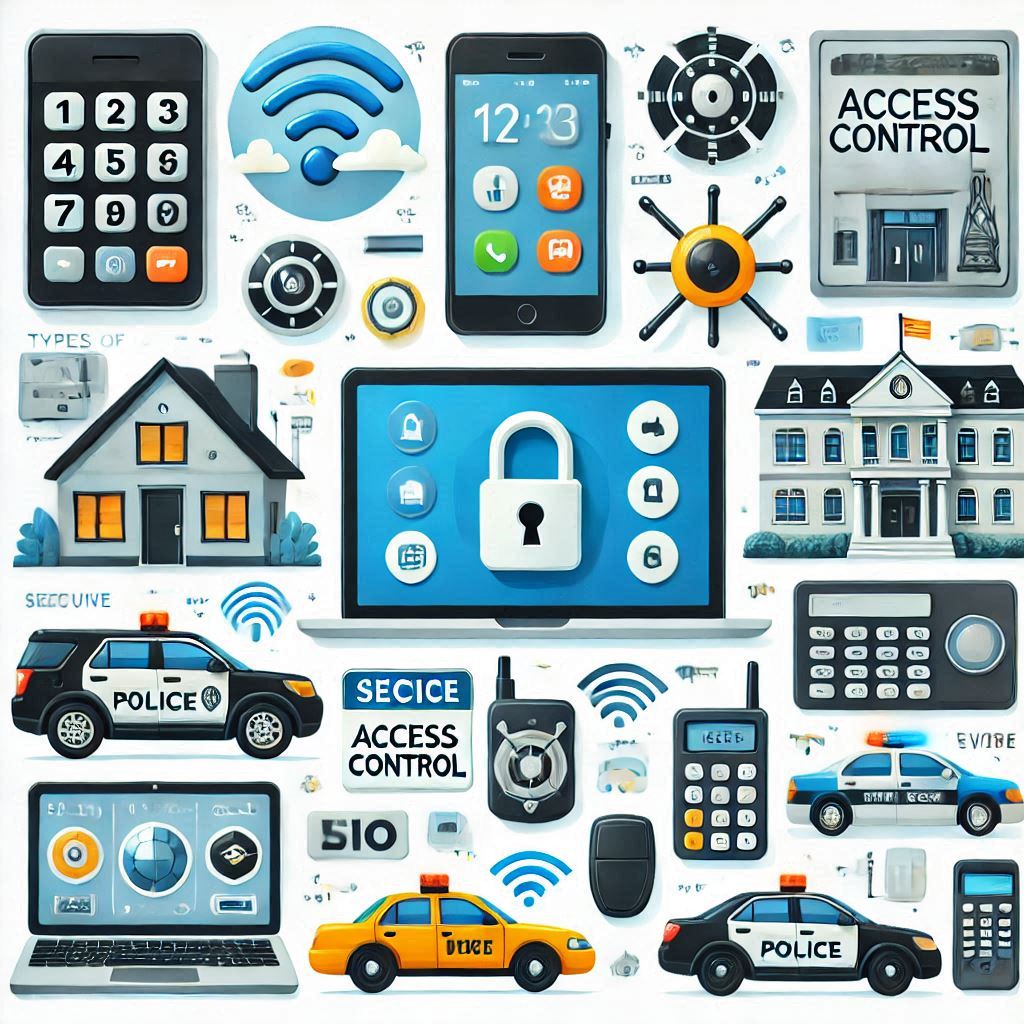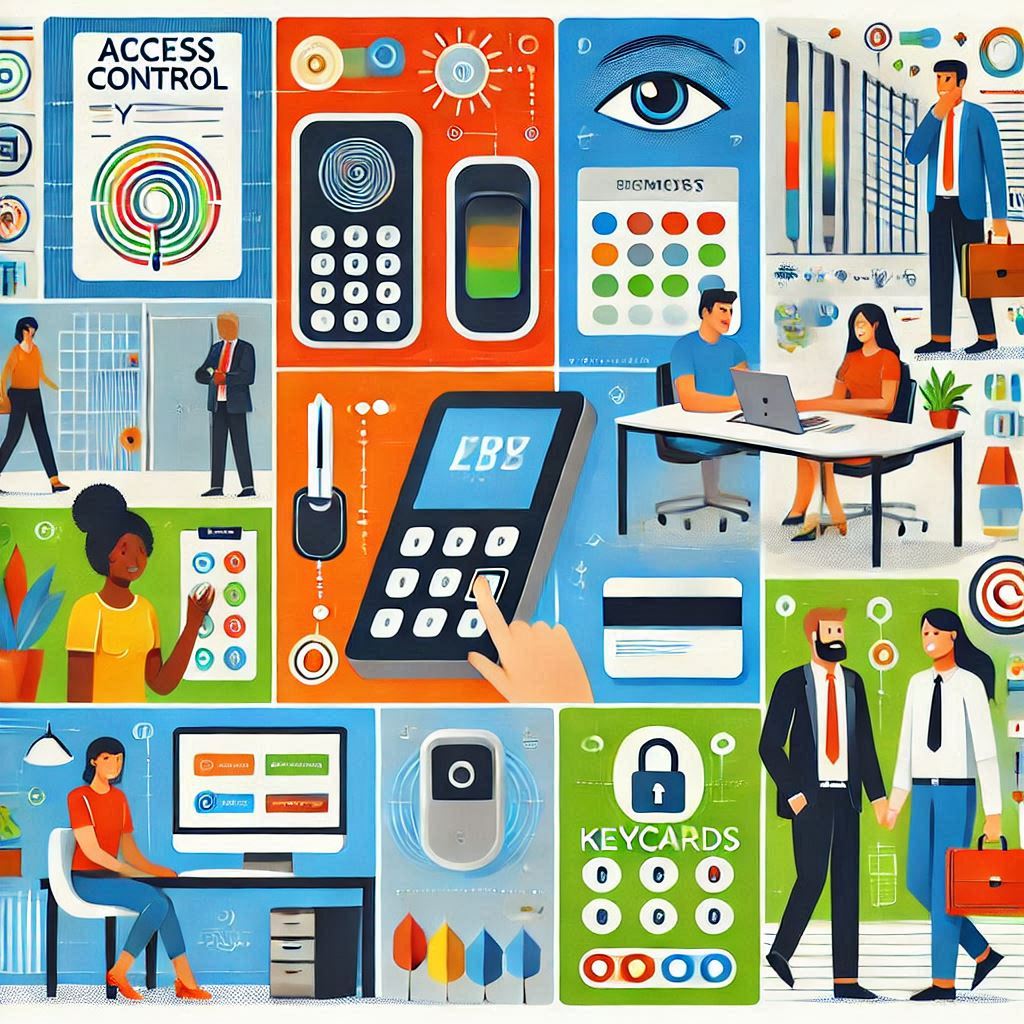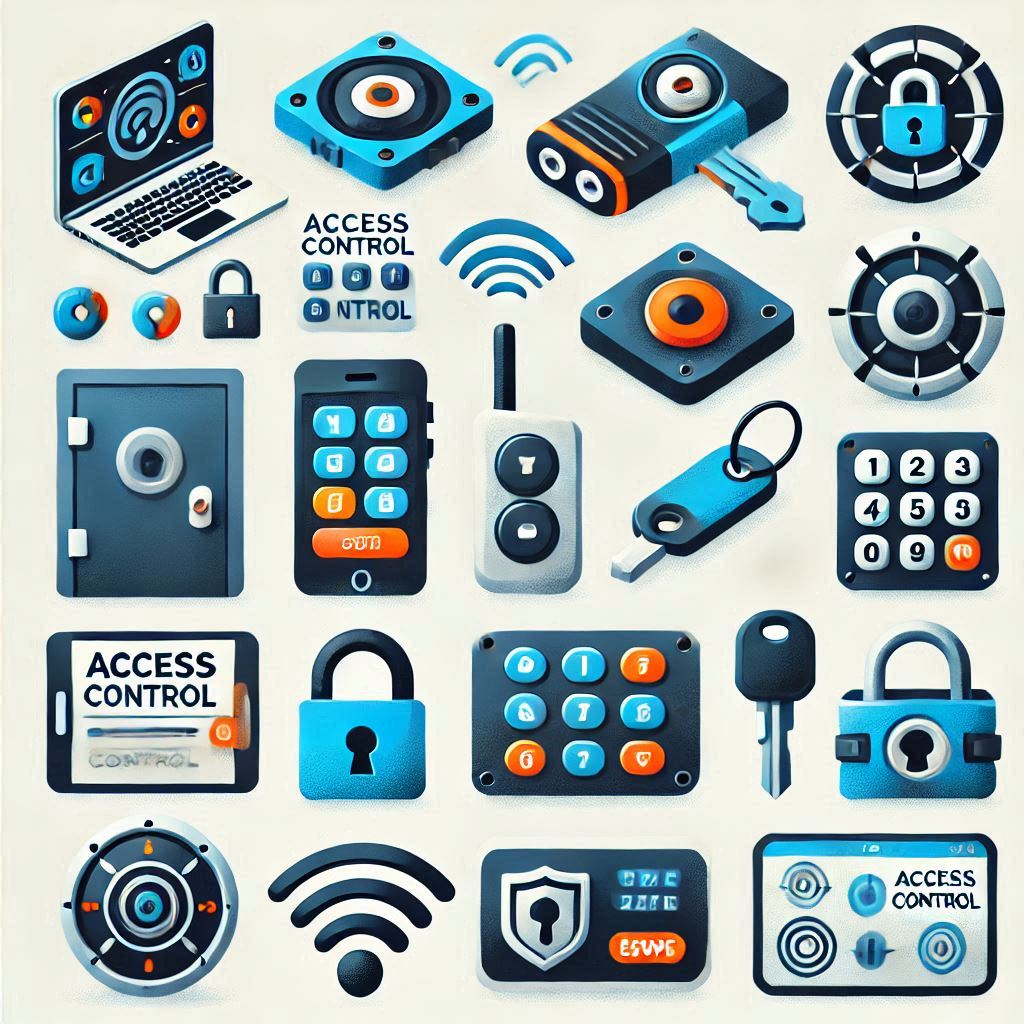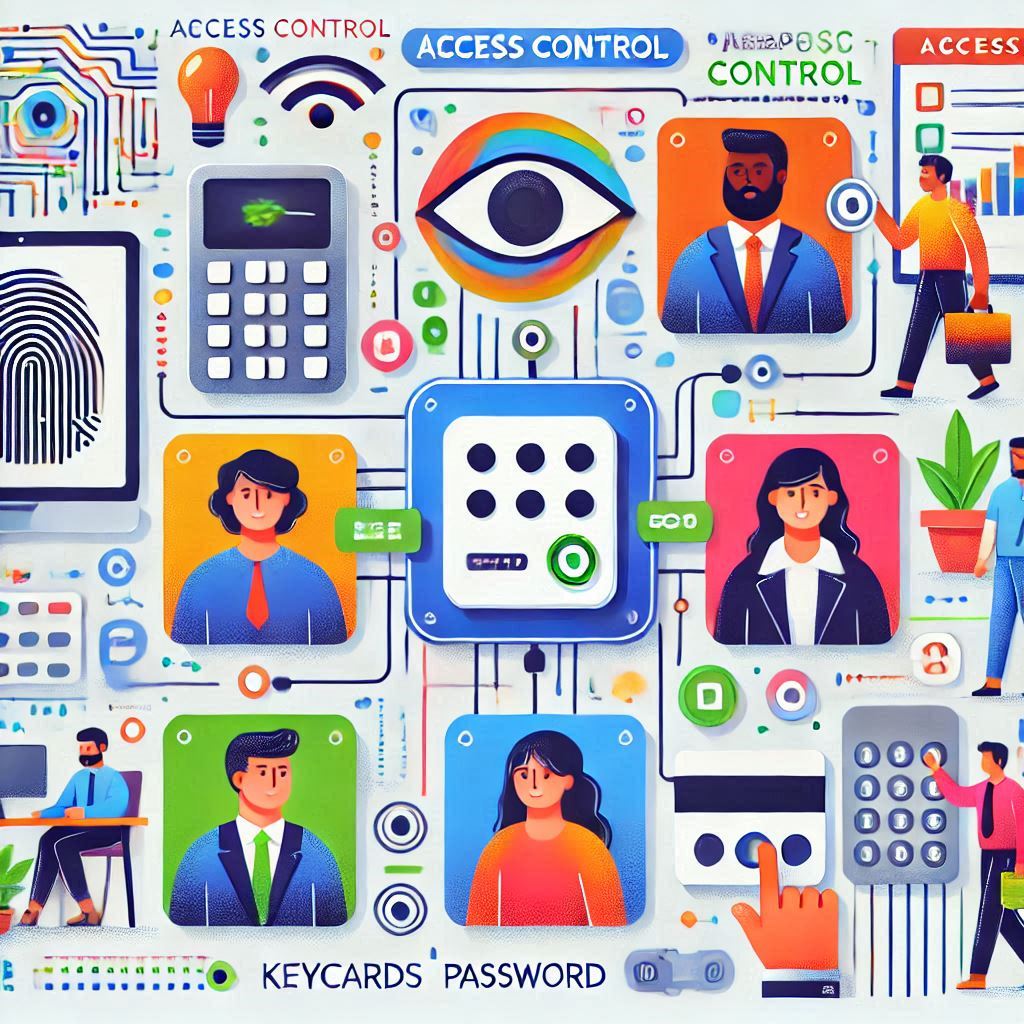Access Control Types : Ensuring Security and Efficiency in 2025+
Access control Types is a crucial element of modern security systems, governing who has permission to enter specific areas or access digital resources. There are several types of access control mechanisms, each offering unique features and benefits. In this article, we will explore these types, their importance, and how they contribute to security and efficiency in various environments.
Access Control Types
Access control types are essential components of modern security systems. They govern who can access certain resources, ensuring the confidentiality, integrity, and availability of information. In this comprehensive guide, we will explore various access control types, their features, benefits, and practical applications.
What Are Access Control Types?

Access control types define the methodologies and systems used to regulate and restrict access to resources. These types play a crucial role in ensuring that only authorized individuals or entities can access specific data, systems, or physical spaces. Organizations rely on access control types to maintain security and compliance with regulatory requirements.
Types of Access Control Systems
- Discretionary Access Control (DAC) Discretionary Access Control is one of the most flexible access control types. It allows resource owners to determine who can access their resources. For instance, a file owner in a computer system can decide which users or groups have read, write, or execute permissions.
- Advantages: Flexibility and ease of implementation.
- Disadvantages: Less secure as permissions can be easily modified or misconfigured.
- Use Cases: Small businesses or individual users where flexibility is prioritized over rigid security.
- Mandatory Access Control (MAC) Mandatory Access Control is one of the strictest access control types. It is governed by a centralized authority and relies on predefined policies to restrict access.
- Advantages: High security and control.
- Disadvantages: Less flexibility and higher implementation costs.
- Use Cases: Government agencies and military organizations requiring stringent security protocols.
- Role-Based Access Control (RBAC) Role-Based Access Control assigns permissions based on roles within an organization. This access control type simplifies management by associating permissions with roles rather than individual users.
- Advantages: Simplifies user management and improves scalability.
- Disadvantages: Requires careful role definition to prevent privilege escalation.
- Use Cases: Enterprise environments with hierarchical structures.
- Rule-Based Access Control Rule-Based Access Control operates based on predefined rules. These rules often include conditions such as time of access, location, or device type.
- Advantages: Highly customizable and dynamic.
- Disadvantages: Complexity in managing numerous rules.
- Use Cases: Situations requiring conditional access, such as time-restricted areas.
- Attribute-Based Access Control (ABAC) Attribute-Based Access Control uses attributes, such as user roles, resource types, and environmental factors, to grant access. This is one of the most versatile access control types.
- Advantages: High flexibility and granularity.
- Disadvantages: Complexity in implementation and management.
- Use Cases: Organizations with diverse user bases and complex access requirements.

Importance of Access Control Types
Implementing appropriate access control types is critical for safeguarding sensitive data and systems. They help prevent unauthorized access, reduce insider threats, and ensure compliance with regulations such as GDPR, HIPAA, and ISO 27001.
How to Choose the Right Access Control Type
Selecting the right access control type depends on the organization’s specific needs, including:
- Security Requirements: High-security environments may benefit from MAC, while small businesses might prefer DAC.
- Scalability: RBAC and ABAC are ideal for growing organizations.
- Cost and Complexity: Simpler systems like DAC are cost-effective, but advanced systems like ABAC offer better control.
Future Trends in Access Control Types
The evolution of access control types is driven by advancements in technology. Here are some emerging trends:
Cloud-Based Access Control: Implementing access control types in cloud environments to manage remote workforces.
Biometric Authentication: Integrating biometrics with access control types for enhanced security.
AI-Powered Systems: Leveraging artificial intelligence to dynamically adjust access permissions.
1. Discretionary Access Control (DAC):
- Definition: In DAC, the resource owner decides who has access to the resource and what level of access they have.
- Example in Practice: A file owner in a computer system sets permissions to allow specific users to read, write, or execute the file.
2. Mandatory Access Control (MAC):
- Definition: Access is controlled by a central authority based on predefined policies, and users cannot alter access permissions.
- Example in Practice: A government system that classifies information into levels (e.g., confidential, secret, top secret) and allows access only to users with matching clearance.
3. Role-Based Access Control (RBAC):
- Definition: Access is granted based on the roles users have within an organization. Permissions are assigned to roles, not individual users.
- Example in Practice: In a company, employees with the “Manager” role might have access to sensitive reports, while “Staff” can only access basic data.
4. Attribute-Based Access Control (ABAC):
- Definition: Access is granted based on attributes associated with the user, resource, or environment, such as time, location, or device.
- Example in Practice: A user can access a database only during working hours from an office network.
5. Rule-Based Access Control:
- Definition: Access is determined by rules defined by the administrator, often based on conditions such as IP address or time of access.
- Example in Practice: A rule might allow access to a network only during weekdays between 9 AM and 5 PM.
6. Identity-Based Access Control:
- Definition: Access decisions are made based on the user’s identity rather than roles or attributes.
- Example in Practice: A system that allows a specific user (e.g., “Alice”) to access a document based on her unique user ID.
7. Time-Based Access Control:
- Definition: Access is granted or denied based on a specific time or duration.
- Example in Practice: An employee can access certain software only during their shift hours.

Understanding Access Control
Access control is the process of regulating and managing who can access physical locations, information, or resources. It involves authentication, authorization, and monitoring to ensure that only authorized individuals or systems can access specific areas or data. Let’s explore the different types of access control:
Discretionary Access Control (DAC)
Discretionary Access Control allows resource owners to decide who can access their resources and what level of access they can have. In DAC systems, resource owners have the discretion to grant or revoke access privileges. This type of control is commonly found in personal computing environments and small organizations.
Mandatory Access Control (MAC)
Mandatory Access Control enforces strict access policies based on security labels, clearances, and classifications. Users and resources are assigned labels, and access is determined by predefined rules. MAC is commonly used in high-security environments, such as government and military organizations, where data confidentiality is paramount.
Role-Based Access Control (RBAC)
Role-Based Access Control simplifies access management by categorizing users into roles based on their responsibilities within an organization. Permissions are associated with these roles, making it easier to manage access in larger organizations with well-defined job roles.
Attribute-Based Access Control (ABAC)
Attribute-Based Access Control grants access based on various attributes, including user attributes, resource attributes, and environmental attributes. This type of control is highly adaptable and can cater to complex access scenarios, making it suitable for environments with dynamic access requirements.

The Importance of Access Control Types
Access control mechanisms are essential for several reasons:
Data Protection
These mechanisms prevent unauthorized access to sensitive data, reducing the risk of data breaches and protecting the confidentiality and integrity of information.
Compliance and Regulations
Access control systems help organizations meet regulatory requirements by ensuring that access to sensitive data is controlled, monitored, and audited, aligning with industry-specific standards and legal obligations.
Risk Management
Effective access control mechanisms mitigate security risks by limiting exposure to confidential data and preventing unauthorized access, protecting against both internal and external threats.
Implementing Access Control Mechanisms
Implementing access control mechanisms involves a few key steps:
Policy Development: Define access control policies that align with an organization’s security requirements.
Access Control Lists (ACLs): Use ACLs to specify who has access to specific resources and what actions they can perform.
Authentication and Authorization: Implement robust authentication and authorization processes to verify user identities and grant access based on their roles, attributes, or labels.

Conclusion
Access control mechanisms are essential components of modern security systems, ensuring that only authorized individuals or systems can access specific areas or data. Whether it’s Discretionary Access Control, Mandatory Access Control, Role-Based Access Control, or Attribute-Based Access Control, the choice depends on an organization’s specific needs and the level of security required.
Frequently Asked Questions (FAQs):
What is the primary purpose of access control mechanisms?
Access control mechanisms regulate and manage access to resources, ensuring data security, integrity, and confidentiality.
Can access control mechanisms prevent all security breaches?
While they significantly reduce the risk of breaches, no system can guarantee absolute security. Properly configured access control mechanisms are a critical component of a comprehensive security strategy.
How does Role-Based Access Control differ from other models?
RBAC simplifies access management by categorizing users into roles and associating permissions with those roles. It is particularly useful in large organizations with distinct roles and responsibilities.
Where is Mandatory Access Control most commonly used?
Mandatory Access Control is commonly employed in government, military, and other high-security environments where data confidentiality is paramount.
What can organizations do to ensure their access control mechanisms are effective?
Regular assessments, updates, and audits of access control policies, along with user training and awareness programs, can help ensure the effectiveness of these mechanisms.






